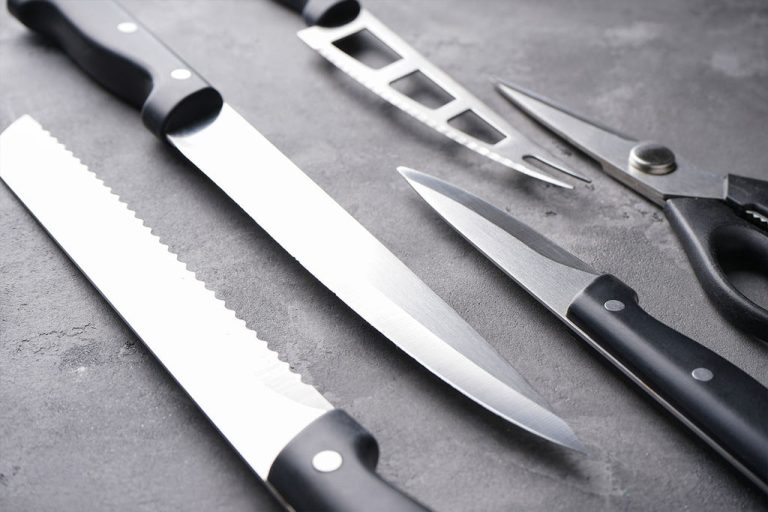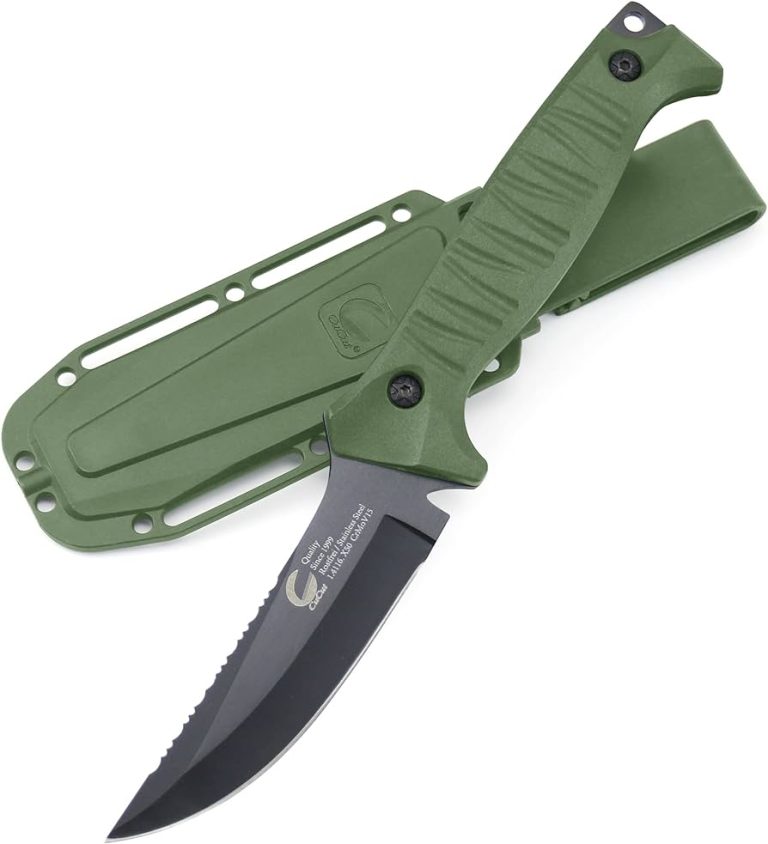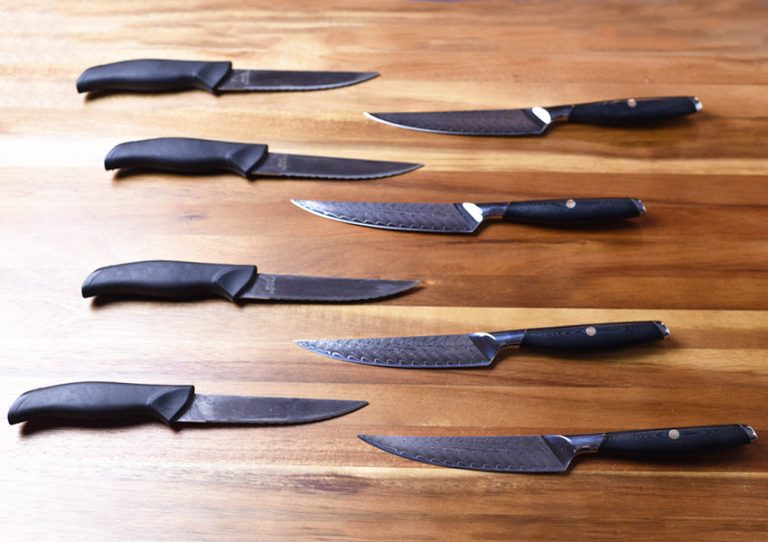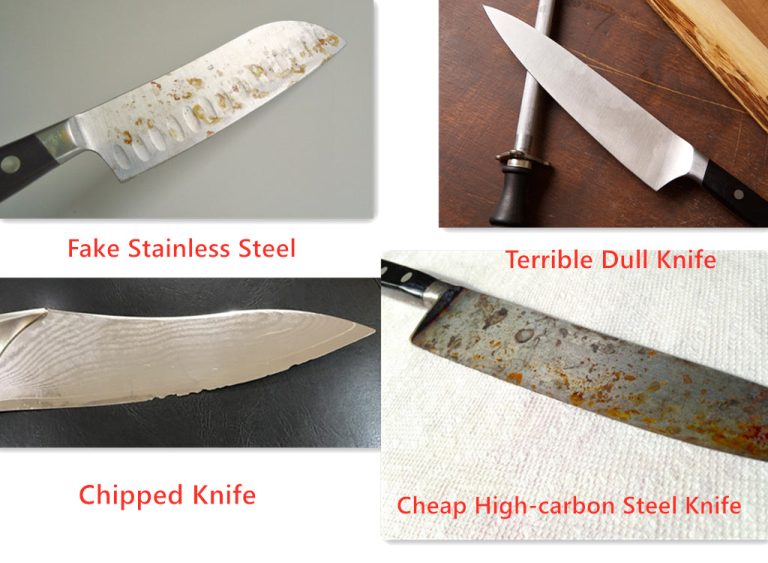What’S the Difference Between a Dagger And a Knife
A dagger is a type of knife that is characterized by its double-edged blade, used primarily for stabbing. A knife, on the other hand, typically has a single-edged blade, used for various cutting tasks such as slicing and dicing.
Daggers are often associated with combat and self-defense, while knives are used for a wide range of purposes in daily life, including cooking and utility tasks.
The Historical Significance Of Daggers
Daggers and knives have a significant historical background. They have played crucial roles in warfare and personal defense throughout various cultures. The evolution of daggers is captivating, showcasing the unique styles and designs of different civilizations. In addition to their functional purposes, daggers also hold ceremonial and symbolic importance in many cultures. They represent power, prestige, and honor.
These sharp weapons have been used by warriors and soldiers for centuries, providing them with a close combat advantage. With their compact size and versatility, daggers have been effective tools in both offensive and defensive strategies. In ceremonial contexts, daggers are often featured in rituals, symbolizing authority and influence. Their cultural significance has made them objects of fascination and interest for historians and collectors alike. Exploring the historical and cultural implications of daggers reveals their enduring importance in human civilization.
Characteristics And Design Features
What’s the Difference Between a Dagger And a Knife
Blade length and shape: Both daggers and knives vary in blade length and shape. Daggers typically have longer and narrower blades, designed for thrusting and stabbing, while knives have shorter and broader blades for cutting and slicing.
Handle construction and ergonomics: The handle construction of daggers and knives also differs. Daggers often have a symmetrical handle design, allowing for a firm grip regardless of the hand used, whereas knives may have handles contoured to suit a specific hand orientation.
Types of materials used: Both daggers and knives can be crafted from various materials. Blades can be made of stainless steel, carbon steel, or even Damascus steel, while handles are commonly made from materials like wood, bone, or synthetic materials such as G10 or Micarta.
Variations in blade thickness and sharpness: Daggers and knives exhibit differences in blade thickness and sharpness. Daggers typically have thinner and sharper blades to penetrate armor or other protective materials, while knives may feature thicker blades for more durability during everyday tasks.
Practical Applications: Dagger Or Knife?
The practical applications of daggers and knives can vary depending on the purpose. In combat scenarios, daggers have specialized functions, such as being used as a weapon for close-quarter combat or for specific fighting techniques. On the other hand, knives are known for their versatility in performing everyday tasks, such as cooking, camping, or self-defense. When choosing between the two, factors that need to be considered include the intended use, the blade length and design, the handle grip, and the overall weight and balance of the weapon. It is also crucial to be aware of legal restrictions and regulations regarding the possession and use of daggers and knives in your location. Adhering to these guidelines ensures responsible and safe utilization of these tools.
Essential Techniques And Handling
Essential Techniques and Handling
When using a dagger, it is crucial to have a proper grip and stance to ensure optimal control and accuracy. A secure grip on the handle allows for better maneuverability, **enhancing your ability to strike effectively**. It is recommended to hold the dagger with a firm grip, keeping your fingers wrapped around the handle and your thumb resting against the blade for stability. In terms of stance, maintaining a balanced position with your feet shoulder-width apart provides a solid foundation. **This enables you to generate power and maintain stability** as you execute various maneuvers.
Similarly, when handling a knife, it is important to develop proper techniques to achieve optimal performance. **Honing your knife skills ensures precise cutting and reduces the risk of accidents**. One technique to master is the pinch grip, which involves holding the knife between your thumb and forefinger while wrapping the remaining fingers around the handle. This grip allows for precise control while minimizing strain on the hand. Additionally, mastering knife techniques such as slicing, dicing, and chopping will improve your overall efficiency in the kitchen or during various activities.
Both daggers and knives play significant roles in training and self-defense. **Proper training in the handling and techniques of these weapons is essential** for individuals seeking to maximize their effectiveness in various scenarios. Training exercises can focus on developing precise strikes, blocks, and defensive maneuvers. When it comes to self-defense, understanding the strengths and limitations of each weapon is crucial. **Knowing how to react and defend oneself in threatening situations can potentially save lives**.
| Dagger | Knife |
|---|---|
| Regularly oil the blade to prevent rust. | Regularly sharpen the blade for optimal cutting performance. |
| Store in a dry environment to avoid moisture damage. | Store in a sheath or knife block to protect the blade and prevent accidents. |
| Periodically clean the handle for hygiene purposes. | Clean the handle and blade after each use to prevent food residue buildup. |
Safety And Legal Considerations
| Safety and Legal Considerations | ||
|
Iconic Daggers And Famous Knives
Daggers and knives are two types of sharp-edged weapons that have distinct characteristics and purposes. Iconic daggers throughout history have left a lasting impact due to their notable significance. These historical daggers hold symbolic value and are revered for their legendary tales across cultures.
Similarly, famous knives from different parts of the world have gained recognition for their craftsmanship and cultural significance. These knives embody the traditions and heritage of their respective regions and are cherished for their unique designs and functionality.
Additionally, daggers and knives have made their way into popular culture, further solidifying their place in history. Movies, books, and other media have featured iconic blades, portraying them as symbols of power, honor, or danger. The influence of these pop culture references has shaped perceptions about daggers and knives in society, enhancing their allure and fascination.
Conclusion: Appropriate Tool For The Task
Daggers and knives are both indispensable tools with distinct characteristics and purposes. While both are bladed instruments, they differ in design and functionality. Daggers typically feature a double-edged and symmetrical blade, optimized for piercing and thrusting motions. Knives, on the other hand, tend to have a single-edged blade with a wider range of shapes suitable for slicing, chopping, and cutting tasks.
Making informed decisions when choosing between a dagger and a knife depends on individual needs. Factors to consider include the specific task at hand, such as self-defense, combat, or culinary requirements. It’s important to appreciate that historical and cultural importance plays a role as well. Daggers often carry a symbolic significance tied to honor and valor, while knives have been deeply integrated into various cultures and their culinary practices.

Credit: www.differencebetween.com
Conclusion
Understanding the difference between a dagger and a knife is crucial for anyone with an interest in weaponry or historical artifacts. While both are bladed weapons, a dagger typically features a double-edged blade and is designed primarily for stabbing, while a knife has a single edge and is a more versatile tool that can be used for a wide range of tasks.
The distinction between the two goes beyond their appearance and functionality. It encompasses historical context, cultural significance, and the evolution of human civilization. Whether you have an appreciation for the craftsmanship of these weapons or simply want to expand your knowledge, grasping the nuances between a dagger and a knife brings you closer to understanding our past.
So, whether you’re an enthusiast, a collector, or merely interested in this subject, the disparity between a dagger and a knife offers a fascinating glimpse into human ingenuity and the ever-changing nature of our tools.







Now I know differences between the 2 knives
Thanks
Great